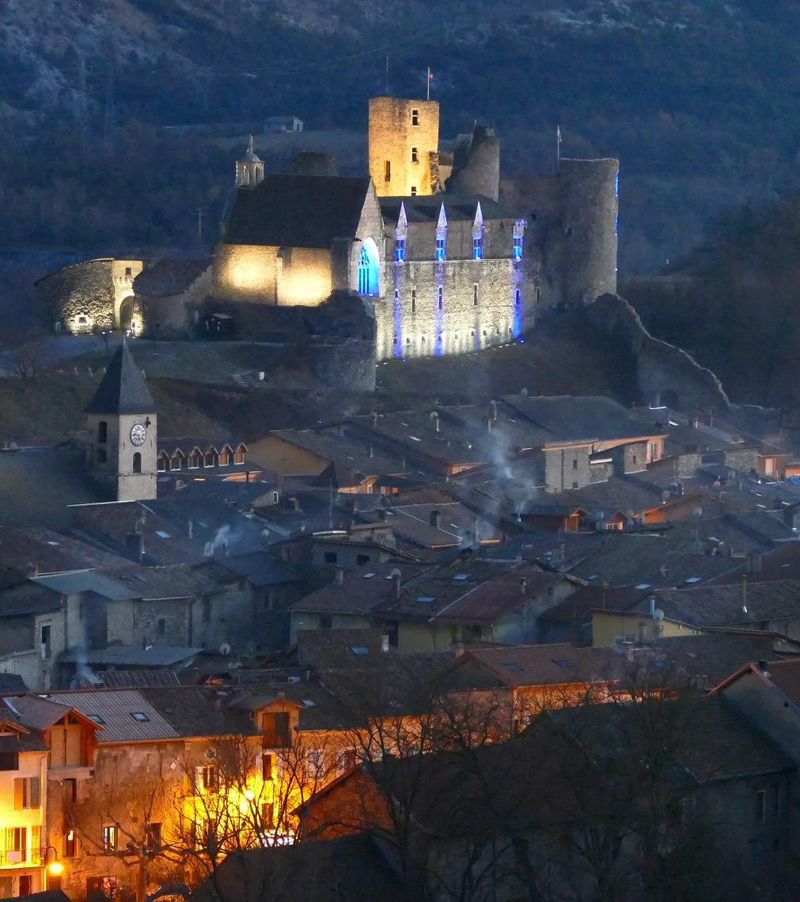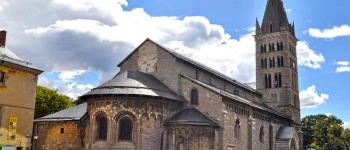
A little bit of History
In the Xth century Tallard is under the protection of the princes of Orange and this until 1215, date on which they will give the lands to the knights of Saint-Jean de Jérusalam who will build a small castle on the site of the current castle.
In 1326, Tallard becomes a viscounty with the attachment of 7 surrounding parishes.
Arnaud de Trians, owner in 1322 and becomes the first lord of Tallard and builds a fortified castle starting from the existing building, ruins of the current house.
By successions, Bernardin de Clermont, descendant of Arnaud de Trians, marries in 1496, Anne de Husson, a rich heiress countess of the city of Tonnerre. The fortress, weakened by the wars of religion, is repurchased in 1600 by Étienne de Bonne d' Auriac who makes it restore. In 1692, the Duke of Savoy and his troops attacked the castle, set it on fire and left it abandoned until 1897, when Joseph Roman, historian and archaeologist, bought it back.
In 1927, the castle was sold to the Countess Blanche de Clermont Tonnerre who worked to revive it until her death in 1944. The town of Tallard, aware of its heritage, will buy the castle in 1957.
A long lease of 99 years will be signed in 1964 authorizing the Society of Studies of the Hautes-Alpes (SEHA) to continue this work of restoration and protection: the castle was classified in its entirety in 1969. This lease is finally terminated in June 2012, the town of Tallard resuming the full disposal of the castle.
The Castle of Tallard
Dominating both the roofs of the village and the valley of the Durance, the castle of Tallard, of the 14th and 16th centuries, presents an architecture mixing medieval and Renaissance styles. In addition to the beautiful view on the surrounding landscapes, the visit of the place allows to discover the lordly dwelling, flanked by towers and decorated with mullioned windows, the guardroom, as well as the Saint-Jean chapel of flamboyant Gothic style.
The lord's residence
At the end of the main courtyard, the lordly dwelling, the oldest part of the castle, whose remains date back to the 14th century, was renovated by Lord Bernardin de Clermont in the 16th century.
The house had three floors and two vaulted basements, served by the stair tower. The basement was dedicated to the kitchens and the bugadières (place where the laundry was done) of which vestiges are still visible today. This part has been entirely consolidated and some towers restored.
To discover, the tower of the keep and the tower of the stairs.
The body of Guards
The first floor is pierced by two arched doors. The first one is surmounted by a coat of arms of Clermont hammered during the Revolution of 1789.
A griffin and a lion mutilated stand at the entrance, they carry the insignia of Clermont.
Inside the Guards' quarters, there are three vaulted rooms, one of which adjoins the chapel, which served as the sacristy. On the first floor, a room of more than 300m² has 7 crosses (mullioned windows and crossbars). At the end of the Guards' room, a mullioned window opens onto the chapel, allowing the service to be heard.
This room has been entirely restored.
The Chapel of Saint John
This chapel was built at the beginning of the 16th century by Bernardin de Clermont (1440-1522).
The chapel of Saint-Jean and its flamboyant gothic style façade made of pink limestone called "marble of Guillestre" attests to the wealth of its new owners. The stained glass windows show the coats of arms of the different families of lords who successively owned the castle.
The chapel was classified as a historical monument in 1897 when it was bought by Joseph Roman. The interior of the chapel and the roof were restored between 1964 and 1965.
To discover the statue of the Trinity, the angel, the funerary liter, the liturgical pool, the mullioned windows, the stained glass windows and the funerary crypt (underground chapel).
The rebirth of the castle
In summer, the castle proposes animations and festivities such as the Medieval Festivals;
Guided tours, concerts, exhibitions, night lighting and medieval shows take place in a medieval setting.
Today, the restoration continues. Work is currently underway to make the room of the old press accessible to the public for cultural events.
Reservation at the Tourist Office in Tallard at 04 92 54 04 29
In the off-season, tours are still available for groups, by prior arrangement at: patrimoine@ville-tallard.fr
Renseignements et réservations à l’Office de Tourisme : https://www.gap-tallard-vallees.fr/
Les visites de groupes (à partir de 20 personnes) sont possibles sur réservations à l'adresse suivante : patrimoine@ville-tallard.fr
Source : Town hall of Tallard
Castle of Taillard
Rue du Château,
05130 Tallard
Tel : 04 92 54 04 00
https://www.ville-tallard.fr/fr/decouvrir/chateau-et-patrimoine/
Translated with www.DeepL.com/Translator
(free version)





